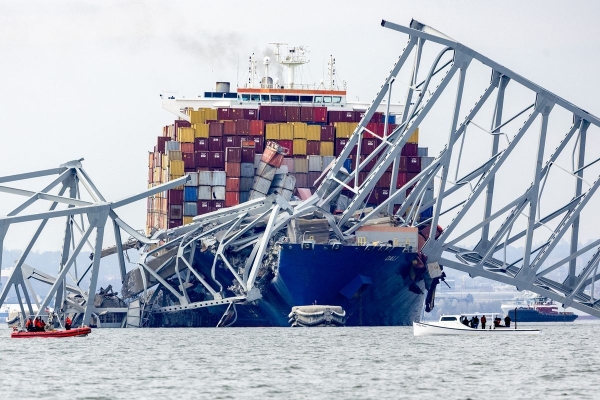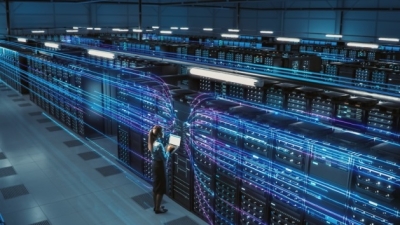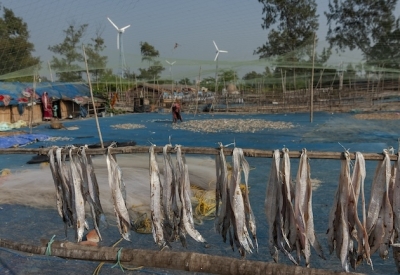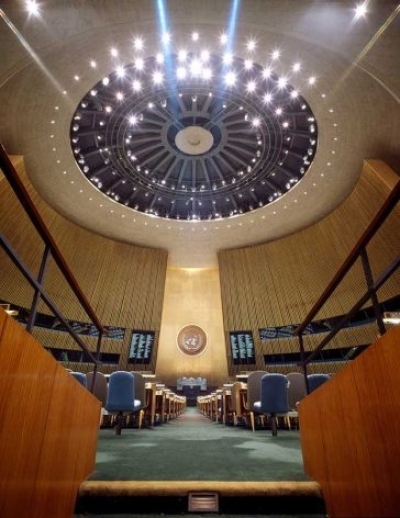Baltimore woke up yesterday to horrific images of the Francis Scott Key Bridge collapsing into the harbor after the cargo ship Dali lost power and collided with a support column.
It’s a horrible tragedy — six construction workers who were on the bridge at the time are missing and presumed dead — and one that will likely take at least several billion dollars to repair.
In a small bright spot, the macroeconomic impact will likely be limited. (While Baltimore is the US’s 17th largest port and there will be some costs and delays, particularly around automobiles and coal, other ports will quickly handle rerouted container ships.)
There is a reason, however, that economic concerns immediately spiked: The global shipping industry is having a bit of a rough time right now.
International shipping traffic is being choked at two separate, vital points — the Panama Canal in the Western hemisphere and the Suez Canal in the Eastern — which combined account for more than half of the container shipping that links Asia and North America.
And as awful as this Baltimore incident was, it was, by all accounts, a rogue accident. The root causes of these other disruptions, though? They’re not quite as easily fixed.
Oh, plus pirates are back.
Global shipping’s current problems, briefly explained
The Baltimore incident encapsulates one thing really well: just how globalized the shipping industry is. The Dali was a Singapore-flagged ship, with an all Indian-nationality crew, operated by the Danish company Maersk and on its way to Sri Lanka. (Thankfully, there were no injuries reported among the crew of the ship.)
This degree of interconnectedness — and how fragile it all is — probably feels familiar by now. Remember the wide swath of consumer goods that were subjected to back orders and shortages in 2021 as the global supply chain fell victim to a series of interconnected problems, including (but definitely not limited to) issues with container ships and ports?
Or, more hilariously, remember the delays (and memes) the ship Ever Given spawned when it got stuck in the Suez Canal?
This year is shaping up to be another difficult one for global shipping.
Low water levels in Panama — the result of a prolonged drought that began in early 2023 — forced canal officials late last year to cut the number of ships that pass through each day from the normal 38 to just 24. That’s left some ships stranded for more than two weeks, and others taking costly roundabout routes; major shipping companies are even switching some freight to railroad “land bridges” across parts of the country.
And in the Red Sea, the Houthis, a Yemen-based rebel group that controls much of the country’s north, have been waging an increasingly serious campaign of attacks against shipping, purportedly in protest of Israel’s war in Gaza. Ships are rerouting here, too, this time around the Horn of Africa, or facing the risk at added cost. At the start of this month, the Houthis sank a ship. And while the group is reportedly allowing safe passage to some ships — those affiliated with Russia and China — that’s not necessarily a foolproof guarantee.
Between the two, prices for freight containers from Asia to the US have doubled over the last six months.
:no_upscale()/cdn.vox-cdn.com/uploads/chorus_asset/file/25357078/GettyImages_1762119060.jpg)
Can’t we fix this?
It would be tempting to look at both of these issues and think, “Things will get better soon.”
And in some ways, they will. “The industry is going to find medium- to short-term solutions against these particular obstacles,” Nikos Nomikos, a professor of shipping finance and risk management at Bayes Business School in London, told me.
Take the Panama Canal problem: The cuts are, canal officials repeatedly say, a responsible adaptation to a particularly bad year. Droughts have happened before, and the weather phenomenon El Niño is exacerbating droughts throughout the Americas, with devastating consequences.
But this isn’t just a bad year. There are systemic issues at play with no quick answers. Climate change is worsening extreme weather events around the world, including droughts.
And that’s running up against another competing need. As Dulcidio De La Guardia, a director at the Morgan & Morgan Group in Panama, told the Latin American Advisor in February, “The lakes that provide water to the Canal are the same ones used to supply drinking water to the major cities of the country.”
“And water consumption has increased more rapidly than forecasted due to population growth, and poor management, waste, inefficiencies and corruption at the state-owned water company,” he said. There are potential solutions, but no easy or immediate ones.
And then in the Red Sea: While the Houthis might temporarily halt or reduce their attacks if a ceasefire between Israel and Hamas comes through, there’s no guarantee that they’ll stop altogether.
That’s because, as one Yemeni analyst told my colleague Josh Keating, the attacks serve a lot of the group’s other aims, allowing them to “disrupt economic activity, extract political concessions, and bolster their standing.” Having achieved that, they show no signs of backing down, even in the face of Western military strikes.
Moreover, this is part of a broader trend of increased geopolitical instability, all of which can impact — and increasingly is impacting — global shipping. See also: Russia blocking Ukrainian grain from transiting the Black Sea at times during that war, fears about how a war over Taiwan will affect the global economy, and more.
What’s happening in the Red Sea, in other words, is symptomatic of something fundamental.
The “principle of freedom of navigation is being challenged here,” Rahul Kapoor, the head of shipping analytics & research at S&P Global Commodity Insights, told Bloomberg in December about the Houthis’ attacks.
I’m not trying to be alarmist. Global shipping is a “resilient industry,” Nomikos told me.
But countries’ militaries and international shipping companies alike are thinking and planning for more maritime disruptions.
Customers, unfortunately, should too.
Any disruption’s net result “will be an increase in the freight cost, either because you have more fuel consumption and longer transit times, or because you require a premium to compensate you for the risks that you face,” Nomikos said.
This story appeared originally in Today, Explained, Vox’s flagship daily newsletter. Sign up here for future editions.






